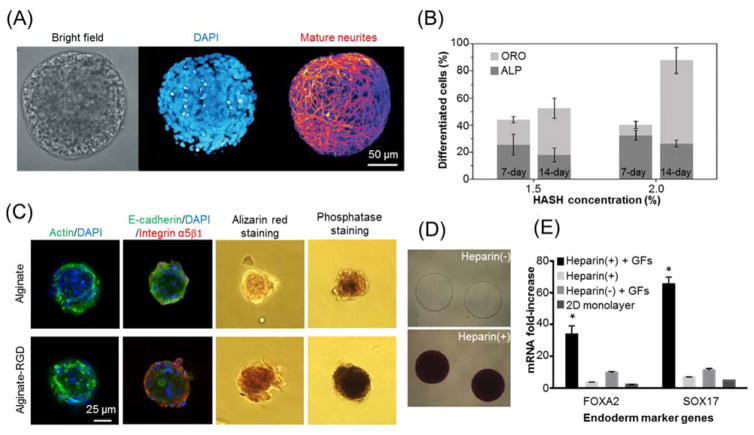Fig. 7.
Hydrogel microencapsulation for stem cell differentiation. (A) Typical images of neuron differentiation of human neural stem cells in matrigel core-alginate shell hydrogel microcapsules. Image is reprinted and recreated with permission from reference 178. (B) Percentages of osteogenic (ALP staining) and adipogenic (ORO staining) differentiations of human mesenchymal stem cells (MSCs) in thiol-modified hyaluronic acid (HASH) hydrogel of different concentrations. Image is reprinted and recreated with permission from reference 179. (C) Osteogenic differentiation of human MSCs in alginate hydrogel microcapsules with or without RGD modification. Image is reprinted and recreated with permission from reference 157. (D–E) Enhanced endodermic differentiation of PEG-encapsulated ESCs with heparin modification. Images are reprinted and recreated with permission from reference 190. (D) Toluidine blue staining of PEG hydrogel microcapsules with (+) or without (-) heparin. (E) Definitive endoderm marker expression of encapsulated mouse ESCs. The heparin-containing PEG hydrogel microcapsules promote endodermic differentiation with a single dose of growth factors due to the sequestration effect of heparin.

